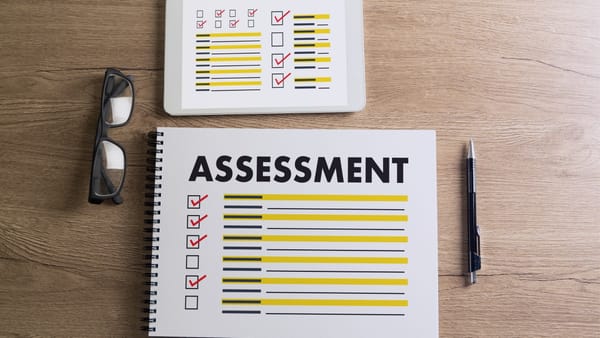Learning outcomes have become pivotal in vocational education and training (VET). They offer a structured way to define what learners should know, do, and understand by the end of a learning process. This article examines implementing learning outcomes in vocational training, exploring their types, benefits, and the steps involved in their development, implementation, and assessment.
Understanding Learning Outcomes
Grasping the essence of learning outcomes is necessary for their effective implementation in vocational training. They are not abstract but practical goals guiding the educational journey. They establish clear expectations for learners and instructors, laying a foundation for course design and assessment.
What are Learning Outcomes?
Learning outcomes are specific statements describing the knowledge, skills, and attitudes learners are expected to acquire through a course or training programme. For example, apprenticeships in England are designed by standards that set out the skills, knowledge, and behaviours expected at the end of the programme. Learning outcomes create clear expectations for learners and instructors, shaping course content and assessment criteria.
Types of Learning Outcomes:
- Knowledge-based Outcomes: These focus on the theoretical understanding learners need. For example, "Participants will explain various economic policy theories."
- Skill-based Outcomes: These highlight practical abilities and skills learners must develop. For example, "Participants will code HTML and CSS."
- Attitude-based Outcomes: These address behavioural changes and attitudes learners should adopt. For example, "Participants will appreciate the importance of respect and collaboration."
Benefits of Setting Learning Outcomes
Recognising the benefits of well-designed learning outcomes is essential for appreciating their value in vocational education. They offer multiple advantages that enhance the teaching and learning experience, making education more effective and meaningful for all stakeholders.
- Enhanced Learning: Defined learning outcomes set precise goals for learners, improving the learning experience.
- Increased Understanding and Retention: They help learners connect new knowledge with existing knowledge, enhancing retention.
- Enhanced Self-Reflection: Outcomes encourage learners to reflect on their progress and identify areas for improvement.
- Improved Course Design: They guide instructors in creating course material aligned with desired results, ensuring a focused and relevant learning experience.
Key Components of Effective Learning Outcomes
Effective learning outcomes must be written with key components in mind. These ensure the outcomes are clear, measurable, relevant, and achievable, providing a solid foundation for teaching and learning.
- Specificity and Clarity: Outcomes should be unambiguous, making it easy for learners to understand what is expected.
- Measurability and Observability: Outcomes should be measurable, allowing instructors to assess whether learners have achieved them.
- Relevancy: Outcomes should be relevant to the course content and learners' needs.
- Attainability: Outcomes should set realistic expectations for what learners can achieve within the course timeframe.
Implementing Learning Outcomes in Vocational Training
Implementing learning outcomes in vocational training involves several steps, from initial development to practical application and assessment. A process must be followed to bring learning outcomes to life in a vocational training context.
Developing Learning Outcomes:
- Identify Learner Needs: Understand the specific needs of learners and the skills required by the industry.
- Set Clear Objectives: Define what learners should be able to do by the course's end. For instance, a web development course might include outcomes like "Participants will build a responsive website using HTML, CSS, and JavaScript."
- Align with Industry Standards: Ensure learning outcomes align with current standards and practices.
Implementing Learning Outcomes:
- Design Course Content: Create course materials, including lectures, assignments, and practical exercises, supporting learning outcomes.
- Engage Stakeholders: Involve industry professionals, educators, and learners in the development process to ensure relevant and comprehensive outcomes.
- Resources: Supply learners with necessary resources, such as textbooks, online materials, and hands-on tools, to achieve learning outcomes.
Assessing Learning Outcomes:
- Traditional Assessment Methods: Exams, quizzes, and written assignments evaluate learners' knowledge and skills.
- Authentic Assessment Methods: Incorporate practical exercises, simulations, and projects allowing learners to demonstrate their abilities in real-world scenarios.
- Formative and Summative Assessments: Use formative assessments throughout the course to provide ongoing feedback and summative assessments at the end to evaluate overall achievement.
Maximising the Impact of Learning Outcomes
To maximise the impact of learning outcomes, adopt a continuous improvement approach and tailor the learning process to meet individual learner needs. This section discusses strategies for enhancing the effectiveness and relevance of learning outcomes in vocational training.
- Continuous Improvement: Regularly review and update learning outcomes to ensure they remain relevant and effective.
- Personalisation: Tailor learning outcomes to meet individual learner needs, allowing for differentiated instruction and personalised learning paths.
- Feedback and Reflection: Encourage learners to reflect on their progress and provide feedback to course creators to improve the learning experience continually.
Understanding the Role of Learning Outcomes in Vocational Education Across Europe
The European Centre for the Development of Vocational Training (Cedefop), in collaboration with various international educational bodies, explores the role of learning outcomes in shaping vocational education and training (VET) across Europe and beyond. This policy brief provides a comprehensive overview of the concept, application, and impact of learning outcomes on education systems, focusing on European practices, including those in the UK.
Purpose and Key Findings:
The policy brief aims to elucidate how learning outcomes are integrated into VET systems globally, discussing the rationale, benefits, and challenges encountered during implementation.
Key Findings:
- Definition and Importance: Learning outcomes specify what learners are expected to know, do, and understand by the end of a learning process. This approach is increasingly adopted at national and international levels to enhance the clarity and relevance of educational programmes.
- Global Adoption: Countries across Europe and beyond are incorporating learning outcomes into their educational and qualification systems. The need for greater transparency, consistency, and comparability in educational standards drives this shift.
- Enhanced Transparency and Mobility: Adopting learning outcomes aligns educational programs with labour market needs, enhancing employability and mobility for learners. This is evident in developing national qualifications frameworks (NQFs) and the European Qualifications Framework (EQF).
- Impact on Vocational Education: In Europe, the shift to learning outcomes is one of the most significant trends in VET over the past two decades. It has redefined how qualifications and curricula are designed, making them more adaptable to the changing needs of the labour market.
- Challenges and Criticisms: Despite its benefits, the learning outcomes approach faces criticism for its potential to be overly prescriptive and for the complexities involved in its implementation. There is a need for better alignment between learning outcomes, assessment criteria, and educational practices.
Learning Outcomes in Vocational Education in Europe and the UK:
In Europe, including the UK, learning outcomes define the skills, knowledge, and competencies learners must acquire. These outcomes are central to various educational reforms and initiatives to modernise VET systems. The UK, for instance, has integrated learning outcomes into its qualifications frameworks to ensure vocational training meets industry standards and enhances employability. Similarly, Norway has incorporated learning outcomes into its national qualifications framework, which has been instrumental in curriculum development and student assessment. In Ukraine, the New Ukrainian School reform has made learning outcomes a core part of its educational strategy, focusing on competence-based education to align with European standards. Additionally, in Georgia, learning outcomes are mandatory in accreditation standards, ensuring alignment with the national qualifications framework and enhancing the relevance and quality of vocational training.
Benefits of Using Learning Outcomes:
- Increased Clarity: Learning outcomes provide clear expectations for learners, educators, and employers, aiding in designing targeted educational programs and assessing learner progress effectively.
- Enhanced Relevance: Aligning educational content with labour market needs ensures vocational training is relevant and up-to-date, supporting the development of skills directly applicable in the workplace.
- Facilitated Mobility: Learning outcomes enable the recognition and transfer of qualifications across borders, particularly in Europe, where the EQF facilitates the comparison of qualifications from different countries.
- Support for Lifelong Learning: Focusing on learning outcomes encourages continuous professional development and lifelong learning, allowing for the validation of skills acquired through non-formal and informal learning, thereby broadening access to education and training opportunities.
- Improved Quality Assurance: Learning outcomes contribute to the standardisation and quality assurance of educational programmes, providing a benchmark against which training effectiveness can be measured and improved.
Conclusion
Learning outcomes are essential for structuring vocational training programs that are relevant, measurable, and aligned with industry needs. By effectively understanding, developing, implementing, and assessing these outcomes, vocational education can enhance learner engagement, improve retention of knowledge and skills, and ensure training programmes meet the evolving demands of the labour market.
For further information on implementing learning outcomes in vocational training, refer to the whole document on the Cedefop website.
FAQs
- What are learning outcomes in vocational training? Learning outcomes are specific statements outlining the knowledge, skills, and attitudes learners should acquire by the end of a vocational training programme, ensuring clear expectations and measurable results.
- Why are learning outcomes important in vocational education? They enhance clarity, align training with labour market needs, improve learner engagement, and facilitate qualification recognition across borders, supporting employability and lifelong learning.
- How are learning outcomes developed for vocational training? Developing learning outcomes involves identifying learner and industry needs, setting clear objectives, and aligning them with current standards to ensure relevance and achievability.
- What are the benefits of using learning outcomes in VET? Benefits include increased clarity, enhanced relevance to industry demands, improved learner retention, facilitated mobility through qualification frameworks, and better quality assurance.
- How are learning outcomes assessed in vocational training? Assessment methods include traditional exams and quizzes, authentic tasks like projects and simulations, and a mix of formative feedback and summative evaluations to measure achievement.




